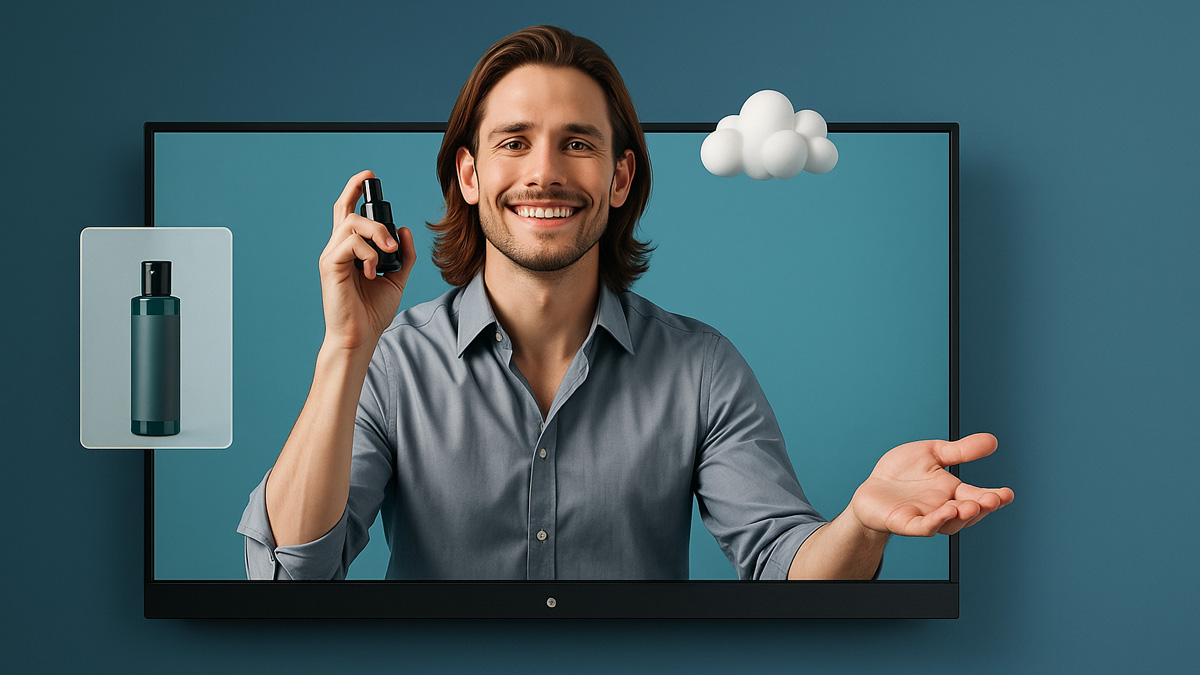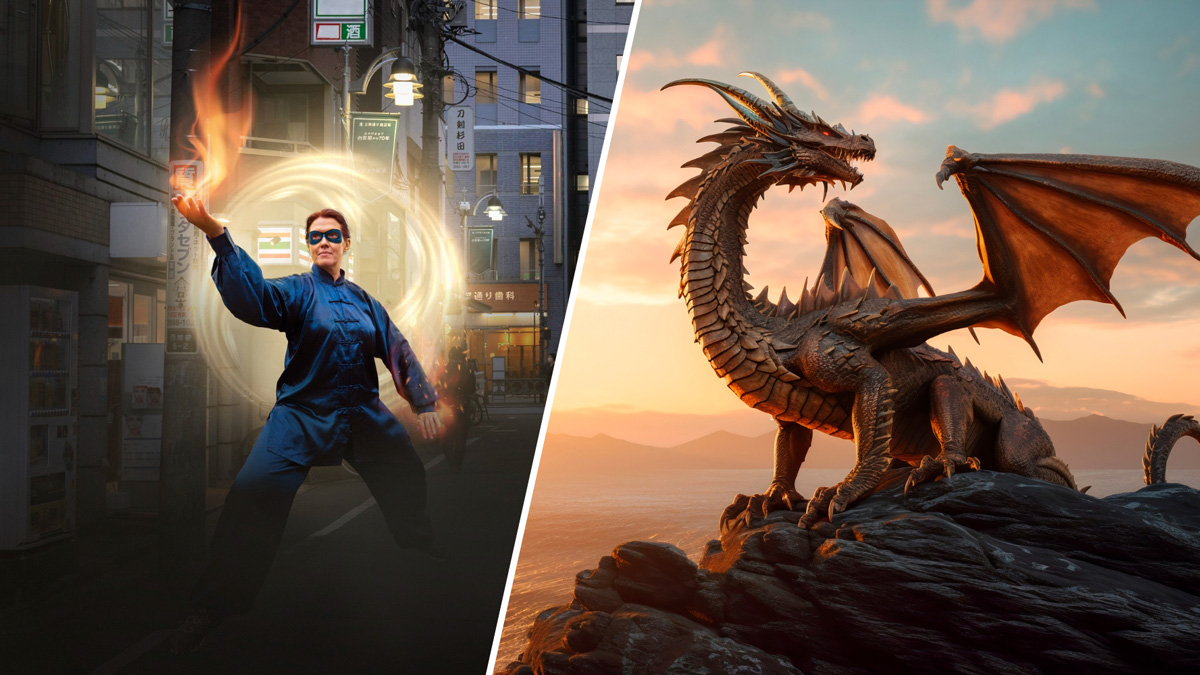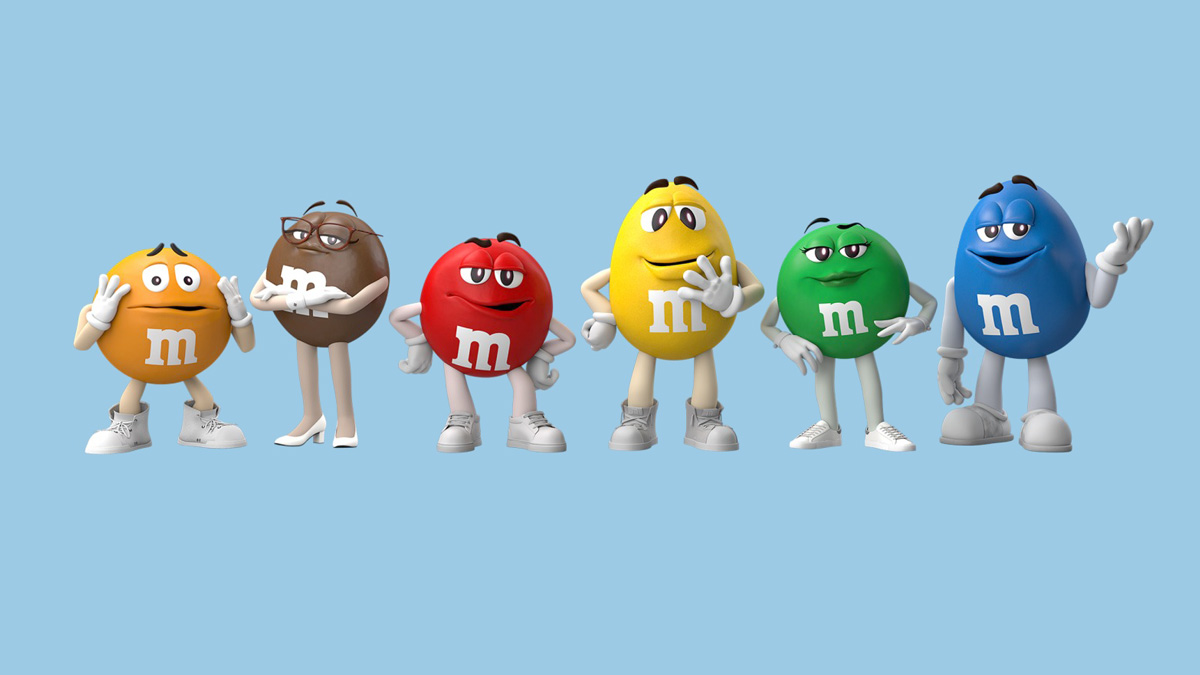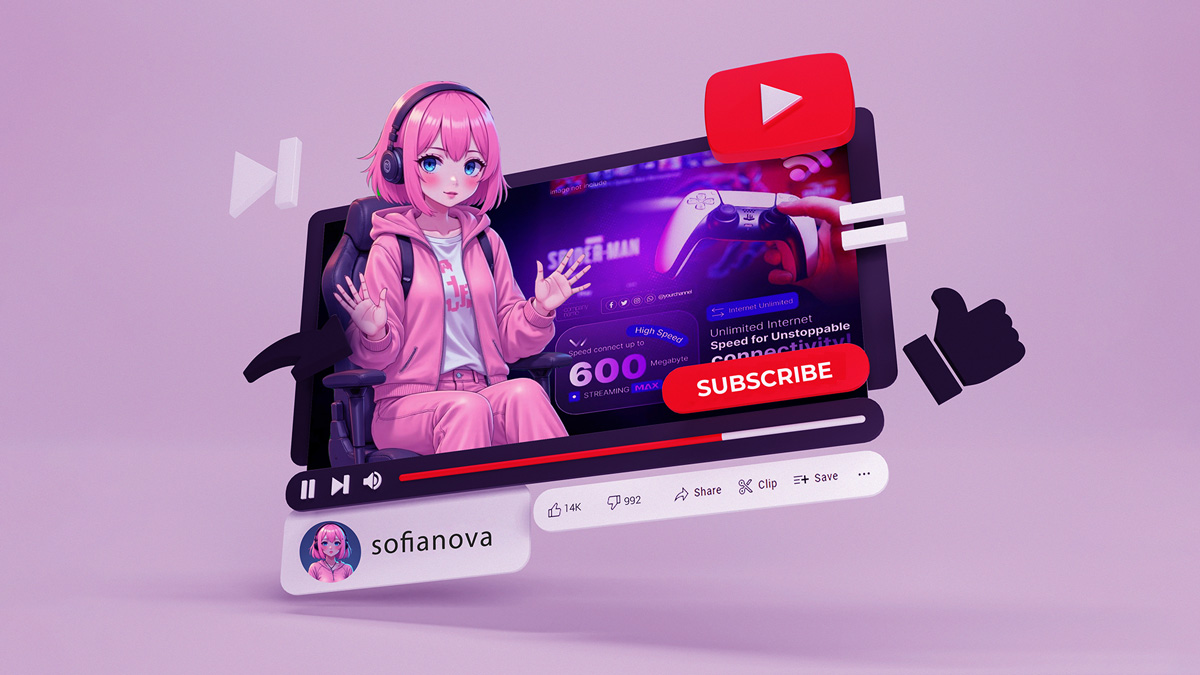
AI has all of us hyped.
Especially when it comes to visuals…
Every day, new tools pop up — and we all get a kick out of turning the weirdest ideas in our heads into full-on videos with just a few prompts.
What used to take months and a team of specialists now happens in seconds. Type a line, hit generate… and boom — you’ve got a desert at sunset, a talking giraffe in a suit, or a spaceship in downtown LA.
If that’s not magic, what is?
But here’s the thing: the initial thrill? We’re kind of past it now.
We’ve played with Sora. We’ve made our videos. We were impressed. Now it’s time to zoom out, get realistic, and ask:
How do we turn this into actual value?
Well, The Reality Hit Fast
Because the moment you spend more than five minutes inside one of these tools — really working with it — you hit a wall.
That’s when the cracks show up and things start to look a little… off.
Suddenly, the Oscar-winning movie you thought you could make in a day?
Turns into: “Okay, yeah… maybe AI’s not that good yet.”
The Real Question: So… What Now?
Okay… NO, we’re not making an Oscar-winning movie overnight. But we’re not giving up on AI either.
It’s time to be realistic — to truly assess what AI brings to the table, what it still lacks, and how we can use it smartly to create the best possible content.
Because make no mistake: there are huuuuge benefits here we shouldn’t forget.
From “Let’s Shoot” to “Let’s Prompt”
Before this new AI era, every marketing campaign that needed a video meant one thing:
Shooting.
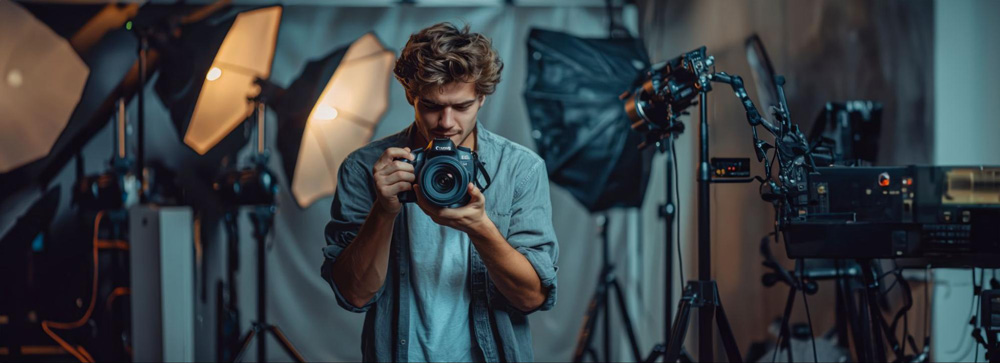
And shooting meant headaches.
Finding the perfect location. Waiting for the perfect weather. Getting the right lighting. Hiring the right actors. Renting expensive cameras, setting up complicated scenes, coordinating dozens of people…
One mistake? One missed shot?
You’d have to reschedule everything — and pay for it all again.
Today, thanks to AI, we can shoot anywhere in the world — without ever leaving the office.
Need a desert in Egypt?
A rooftop view of New York?
A night scene in Paris?
Or even a sci-fi planet that doesn’t exist yet?
AI creates it.
No travel costs, no weather delays, no location scouting.
Exactly the angle, lighting, and time of day you want — in the highest quality possible.
And if you change your mind mid-edit?
Switch the moon for Mars.
Swap daytime LA for nighttime LA.
All doable. All fast. All without the disasters real-world shoots used to bring.
Dream Bigger, Execute Smarter
Okay, beautiful — what else?
Let’s say you’ve got a truly unique product, service, or brand.
And you want to show what makes it different in a way no one’s seen before.
Maybe your new sofa is so soft it feels like sleeping on clouds.

Or maybe your energy drink gives someone the power to summon a dragon that stands on top of Burj Khalifa and declares himself ruler of the region.
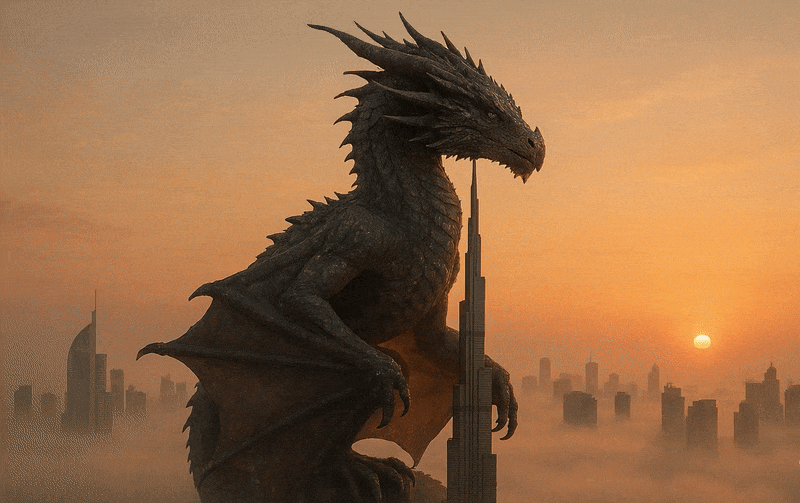
In the past, ideas like these — bold, surreal, full of character — meant massive CGI budgets, weeks of production, and a whole lot of risk.
Sure, they were possible. But 9 times out of 10, they just didn’t make sense to pursue.
So, those wild, brilliant, creative ideas?
They stayed buried in brainstorm decks — forgotten in the graveyard of “cool, but not realistic.”
But today, with AI, we get a second chance.
We can dream up the impossible.
Talking animals. Floating cities. Time travel. Dragons on skyscrapers.
If you can imagine it, there’s a good chance we can create it — faster, smarter, and cheaper than ever.
So maybe it’s time to gather the creative team again and say:
“Alright. Let’s think way, way outside the box this time.”
Now, talking of CGI, let us take you back to our animation roots for a second.
We’ve been in the animation industry for around two decades — and unless you’ve been there yourself, it’s hard to grasp just how complex production really is.
Every minute of animation — whether 2D or 3D — takes a full team of specialists, a mountain of pre- and post-production, expensive software, hardware, and hours of work. Not just for rendering — for everything.
Today though? Things are moving way smoother.
Storyboarding, design, asset creation — many of those early (and painfully time-consuming) steps can now be accelerated with AI.
What used to take months and a whole studio can now happen faster, and often look even better.
Of course, we’re not saying perfection is here.
For complex sequences, especially where visual consistency matters, things can still get tricky.
But is it easier than before?
Absolutely.
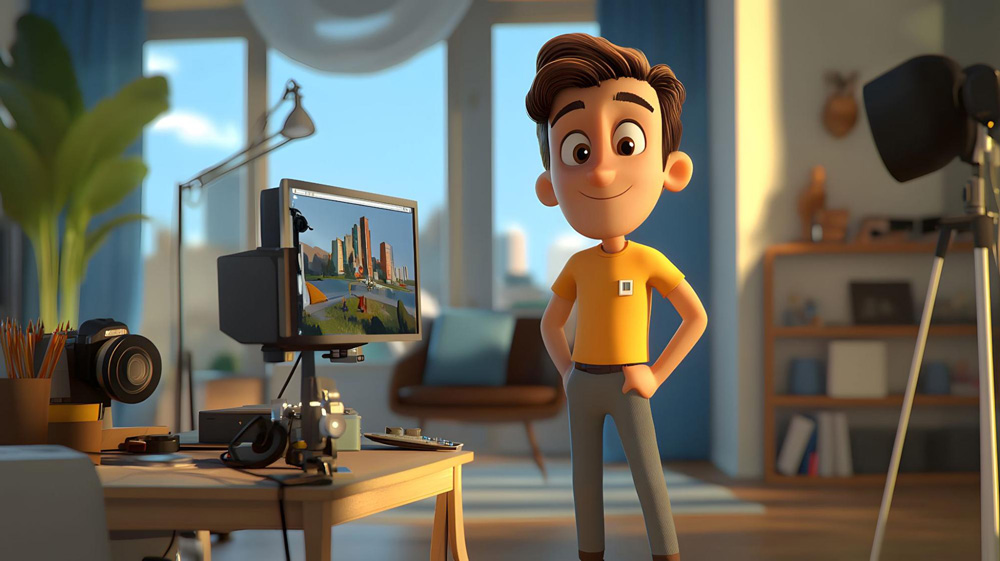
The other big win with AI?
Speed.
And in the world of social media, speed is everything.
Trends explode overnight. Something goes viral, and the brands that jump in early — and do it in a way that feels different — are the ones that win.
AI makes that easier. Faster production, tighter budgets, and way more room to experiment.
But there’s something even bigger that AI brings — and we can’t overlook it.
A New Era of Personas
Or maybe you’ve heard them called AI models, avatars, virtual influencers, digital humans… the list goes on.
It’s all so new that no one’s really settled on one definition yet — and that’s okay.
What matters is what they are:
The face of your brand — without all the real-world complications.
Because let’s be honest: shooting isn’t the only hassle.
There’s also the challenge of finding the right person.
The one face that embodies your message. The one who creates that instant, eye-to-eye connection with your audience.
And if you do find them? You still deal with schedules, contracts, makeup, lighting, styling, “I won’t wear this,” “I won’t say that” — it’s a whole world of constraints.
AI changes that.
Now, we can build the perfect persona — from scratch.
Blonde or brunette? Blue eyes or brown? Curly hair, straight, buzzcut?
You want them serious? Playful? Loud? Calm?
Need them to laugh, cry, dance, explain, whisper, shout?
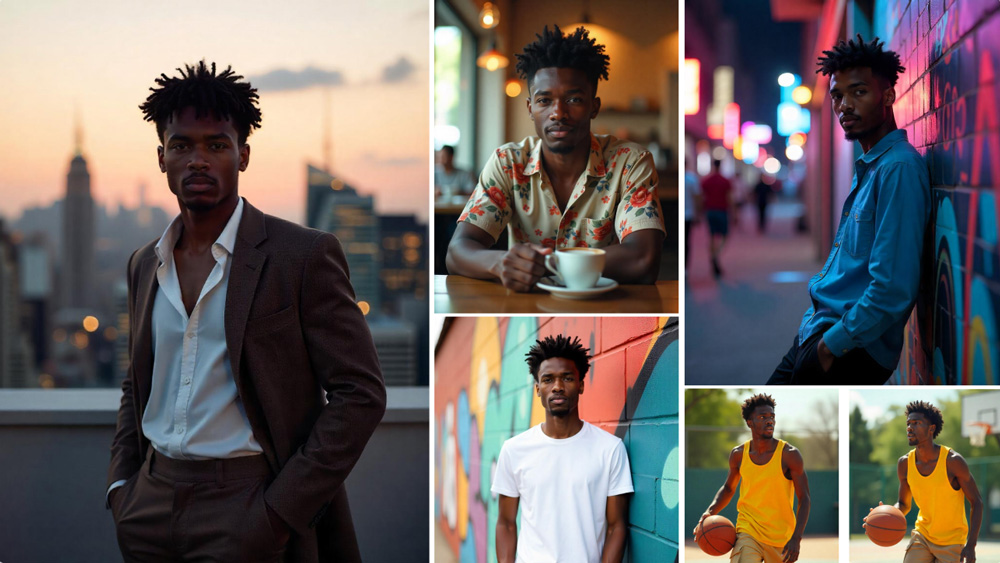
Done.
We can create a character that looks, feels, and acts exactly how you imagined — and who’s always ready, always on-brand, and always available.
And honestly? This is big.
Because this whole persona-building layer unlocks hundreds of new creative opportunities.
Always wanted a social media face for your brand — but didn’t want it to be you? Or just couldn’t find the right person? Let’s build a virtual influencer.
Planning a campaign with multiple characters — different roles, different faces, all in one storyline? Forget casting. Let’s create them all from scratch.
Want a brand mascot that talks? Let’s bring it to life — not just in illustrations, but as a fully expressive, speaking character.
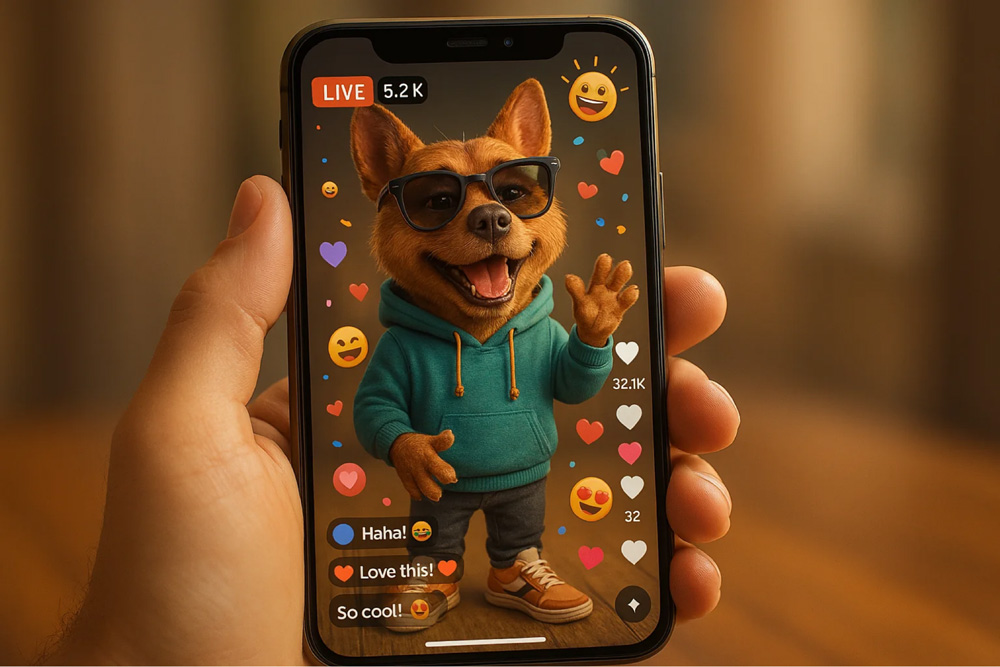
Need your spokesperson to speak five languages for different markets? Easy — your AI character can do that without re-shoots.
Want a series of educational or explainer videos, each with a relatable host tailored to your audience? Let’s give them a smart, friendly face — and keep it consistent across every episode.
Building an interactive experience or virtual world for your brand? Let’s create characters who guide, engage, and entertain your audience in that space.
Want a long-term ambassador that never ages, never cancels, and is always aligned with your brand? Yep — AI can do that.
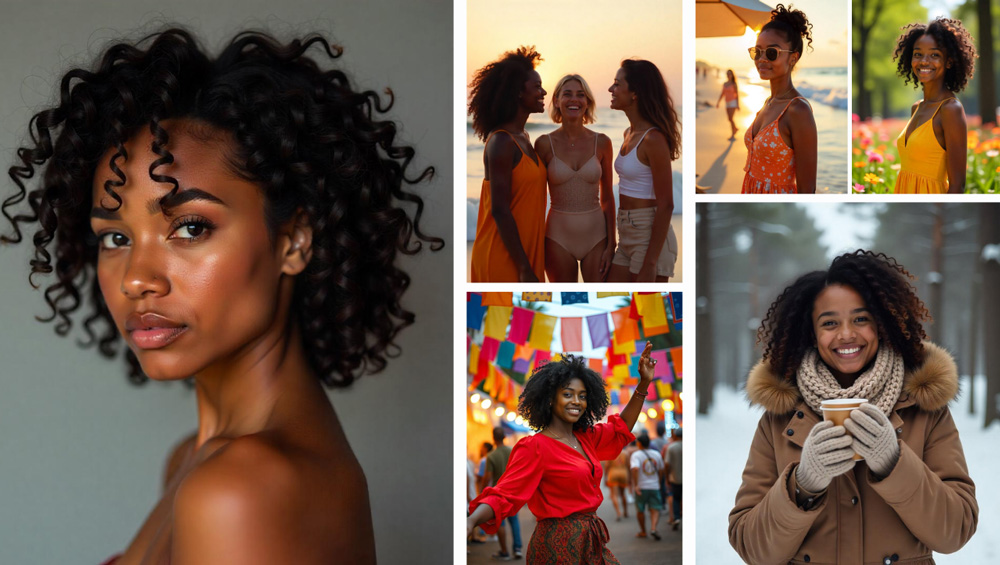
Can we stop naming the possibilities?
Not unless you stop us.
But Let’s Be Honest…
So yeah — those are the pros. And just like that, we’re back in the clouds.
But before we float too far, let’s take a step back.
Because if we’re going to use AI seriously — not just for fun — we need to realistically assess what’s still not-so-great (yet).
The gaps. The frustrations. The things that still need a human fix.
And that’s a good thing.
Because the more clearly we understand both the strengths and the limitations, the better we can plan our next campaigns, with eyes wide open.
AI has come a long way.
But you’ve probably seen it too — those moments where the magic breaks.
A face that doesn’t quite blink right.
Lip-sync that’s almost there… but somehow feels off.
A character’s hands turning into spaghetti halfway through the scene.
Or the same person looking like three different people by the end of the video.
These things pull you out of the story. And when you’re aiming for emotional impact, consistency, or brand-level polish — almost isn’t good enough.
That’s why we don’t rely on AI alone.
Why the Human Role Still Matters
There are still critical parts of the process where human input is non-negotiable.
Every great video needs a creative direction — a vision that shapes the story, the emotion, and the soul behind every frame.
Whoever is writing the prompts, reviewing the outputs, and shaping the scenes?
They need to have a sharp artistic eye — or else you’ll end up with a pile of random, disconnected AI-generated visuals that may look decent at first glance… but feel totally wrong to anyone paying attention. (And even to those who aren’t.)
And here’s a big truth: even the most stunning visuals are empty without a strong narrative.
Yes, tools like ChatGPT can help generate ideas and scripts. But someone has to guide it. Someone has to feed it right.
And that someone? Needs to be a real storyteller — someone who knows how to lead a narrative, build tension, create meaning, and carry the viewer from start to finish.
That same level of care needs to exist on the brand side, too.
To make sure the final video speaks to your audience and actually fits your identity, it has to be overseen by someone who deeply understands branding, not just design or visuals, but the soul of the brand.
And let’s not forget the details.
AI can generate fast — but it takes a trained human eye to fine-tune, polish, and elevate the final product.
And here’s the biggest gap AI still hasn’t closed — and probably won’t anytime soon:
Human emotion.
Because connection doesn’t happen between pixels and people.
It happens between people and people.
AI can speed up your edit.
But the emotional rhythm of a video? That still needs a human hand.
AI can generate color.
But style has to be defined and directed.
AI can write a script.
But it doesn’t understand culture, nuance, humor, or timing.
AI can create content.
But it doesn’t know why that content exists.
That’s where a hybrid approach comes in.
The Hybrid Advantage
AI’s capabilities — the speed, the scale, the wow factor — truly shine when they’re blended with everything we already knew how to do.
The same creative thinking. The same storytelling instincts.
The same eye for detail, branding, and emotional connection.
But here’s something a lot of people overlook: even AI itself works best when it’s hybrid.
You can’t just rely on one tool and expect magic.
Sometimes Midjourney nails the vibe. Sometimes it’s Runway.
Freepik assets might give you a cleaner cut. Kling might bring the right movement.
You have to experiment, mix and match, test scenes in different platforms — and then stitch together the best of each.
That’s how we do it: scene by scene, tool by tool, decision by decision.
What matters is the result — and the willingness to play smart with the tech.
The difference?
Now we do it with fewer people, smarter tools, faster timelines — and often at a much lower cost.
It’s not about replacing the old way.
It’s about evolving it — and building something even more powerful.
Where Do We Go From Here?
So, where does this leave us?
We’re not just watching the future of AI video marketing happen — we’re building it.
This moment isn’t about choosing between AI or traditional methods.
It’s about knowing when to use both — and how to combine speed with soul, automation with emotion, scale with story.
AI has given us the power to create faster and bolder than ever before.
But it’s the human touch that still makes it worth watching.
At least for now.
The tools will keep evolving. The magic will keep getting sharper.
And the brands that win will be the ones who know how to use it all — wisely, creatively, and fearlessly.
Let’s Make Something Unreal — Together
Got a wild idea? A bold story? A product that deserves more than stock footage and boring templates?
Let’s bring it to life — fast, smart, and beautifully.
Start your AI video production journey with Dream Farm.

Nancy
